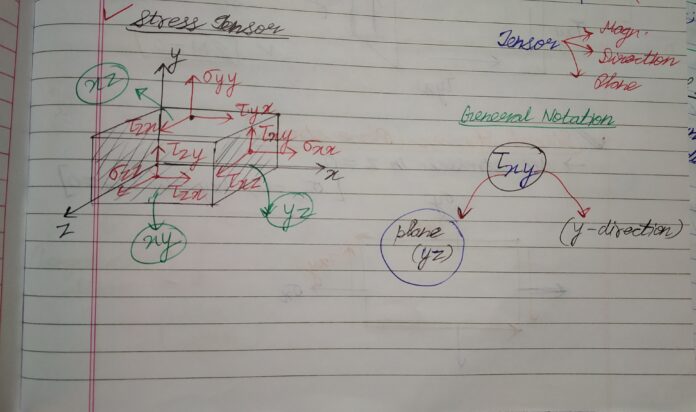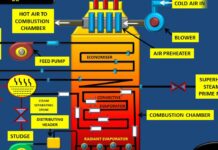TOF AND COMPLEX STRESS ANALYSIS :
SIMPLE STRESS V/S COMPLEX STRESS:
As we know that for a simple stress system, the failure occurs either in two conditions :
- Either it reaches elastic limit
- Either it undergoes permanent deformation (yield point limit).
But , the situation becomes a little difficult TO UNDERSTSAND
It occurs when we look for complex stress system.
A normalised complex stress system looks like this :
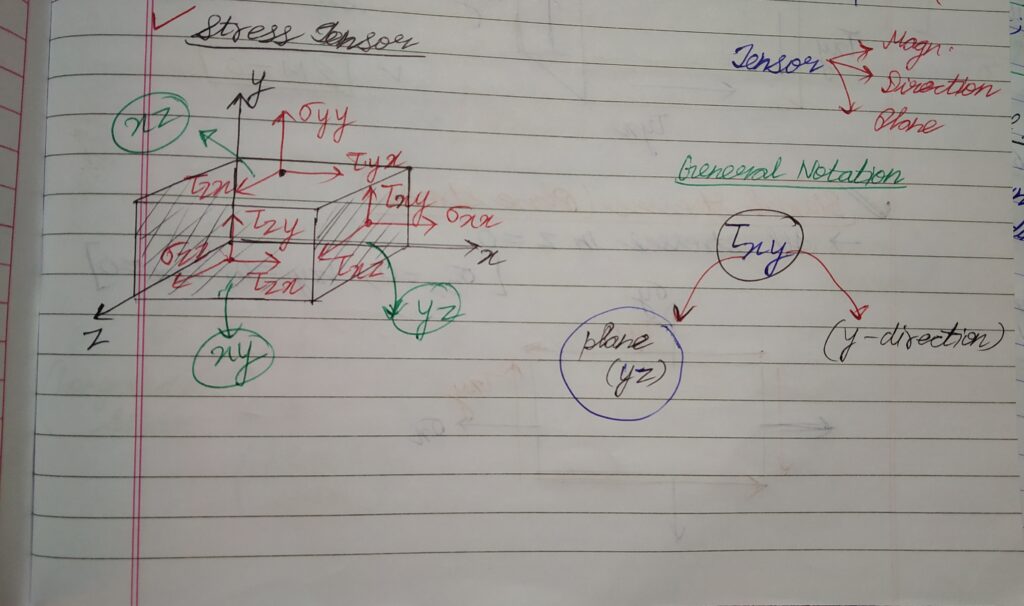
*Stress is a tensor quantity.*

*It became difficult for the engineers to analyse the exact reason for failure in such systems.
Some said its because of normal stress .
Others claimed it to be because of shear stress.
Some intellectuals claimed failure to be a energy analysis factor.
*A council was held by engineers . Various engineers gave their factors and facts. These were listened and verified.
THE COLLECTION OF SOME OF THESE VERIFIED THEORIES COLLABED UNDER “THEORIES OF FAILURE(TOF)”.
LETS STUDY THESE THEORIES IN DETAIL.
Before studying TOF , we should know all the basic terms and notations .Please refer to the previous blog for basic terms and notations . LINK GIVEN BELOW :
GENERAL CONDITION FOR SAFETY : τmax/τys = 0.57 σy
1. MAXIMUM PRINCIPAL STRESS THEORY/MPST (RANKINE THEORY) :
*Rankine developed this theory concept.
*According to this theory;
“A machine element under complex stresses will undergo failure in it , if the principal stress induced in it exceeds the yield stress value of the material.”
THEREFORE ,
For tension : σ1 OR σmax >σy
Compression :σ3 OR σmin > σy
SAFE DESIGN CONDITION :σ1 ≤ σy OR σ1 ≤ σy/FOS (GENERAL )

Therefore , this theory is inaccurate .
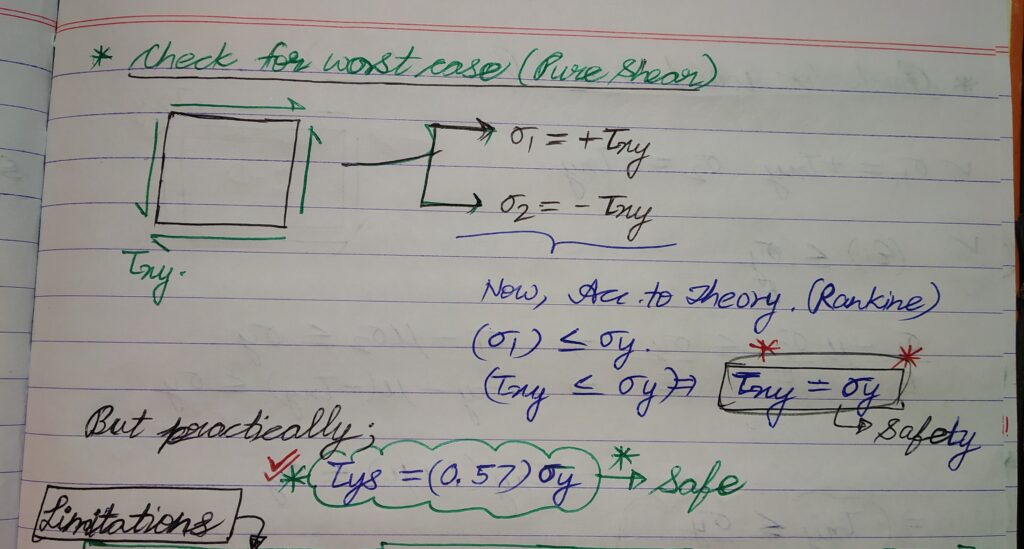
LIMITATIONS :
1.This theory is very much inaccurate w.r.t to the experimental conditions.
2.It cannot be used for ductile materials.
3.Shows inaccurate results during hydro static loading( only normal stress, no shear stress).
4.Shows maximum error when seen in worst case of loading i.e PURE SHEAR..
2.MAXIMUM PRINCIPAL STRAIN THEORY (MPSNT)/ST. VENANT THEORY :
*ST. VENANT developed this theory.
*According to this theory;
“Under complex stresses , a material occurs failure when the principal strain developed crosses the yield strain limit under uni axial loading.”
ε1 >εy
FOR SAFETY DESIGN : ε1 ≤ εy
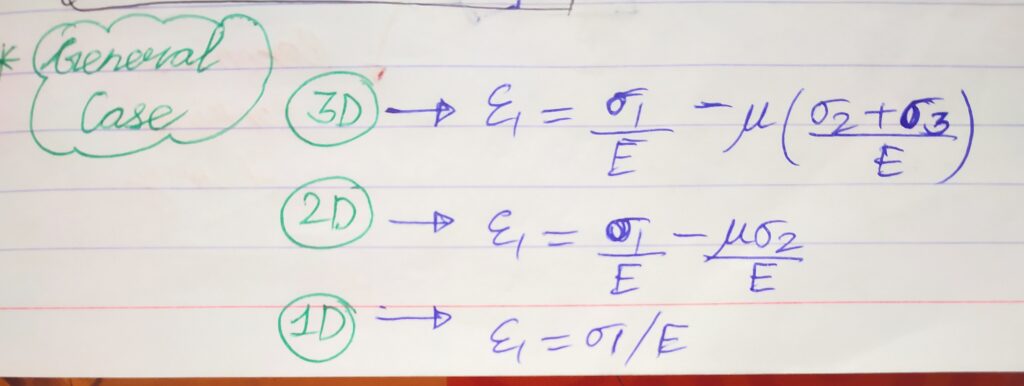

LIMITATIONS:
1.This theory is inaccurate w.r.t experimental conditions, but gives better accuracy than MPST THEORY.
2.Unlike MPST, This theory is used on both ductile and brittle materials.
3.Shows inaccurate results in hydro static loading.
3. MAXIMUM SHEAR STRAIN THEORY(MSST)/ TRESCA AND GUEST THEORY:
* ‘TRESCA AND GUEST’ DEVELOPED THIS THEORY.
* According to this theory;
“Under complex stress , a material will undergo failure if the Max. shear stress induced in the body is equal or greater than the Max. shear stress at yield point (uni axial loading).
Therefore ,
τmax > σy/2
FOR SAFE DESIGN : τmax ≤ σy/2(FOS)
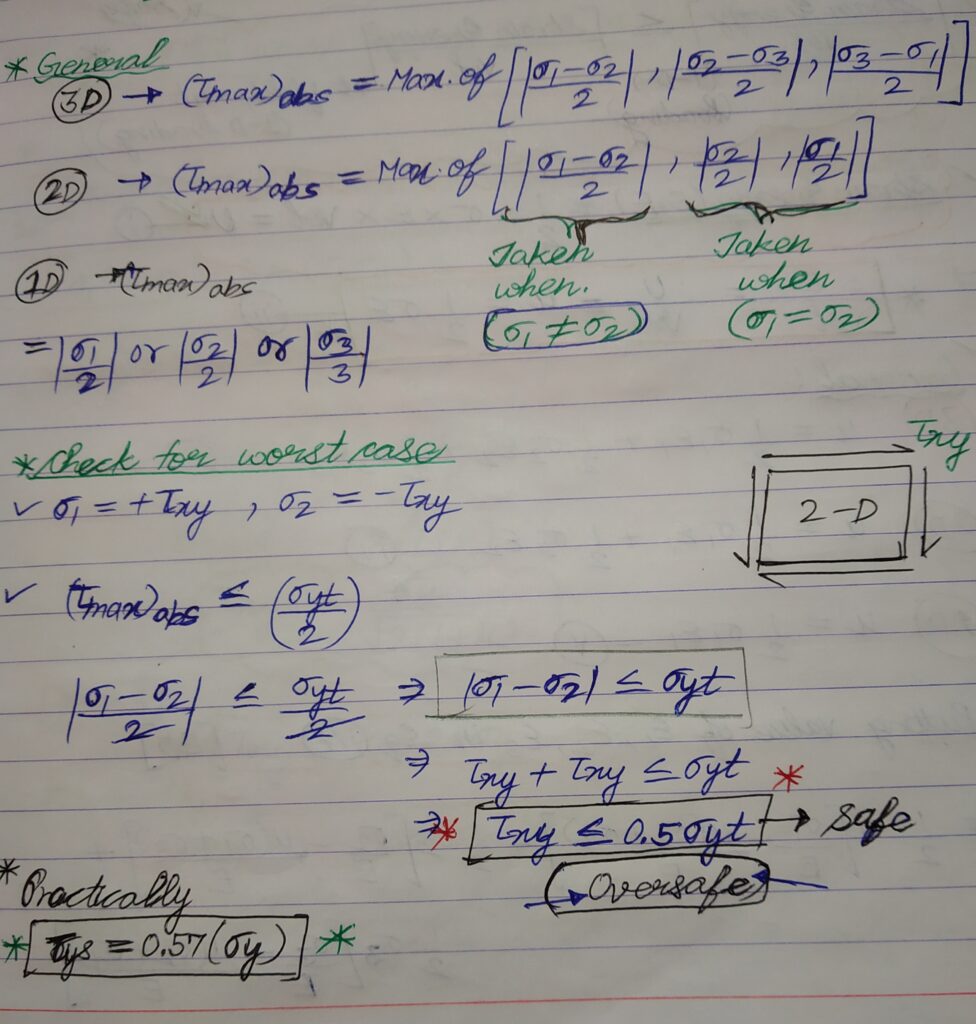
This theory is OVERSAFE.
LIMITATIONS :
1.This theory is not accurate w.r.t to the experimental conditions , but over safe.
*Over safe problems – 1. Larger diameter , more material in use , more costly and more weight of material.
2. Cannot be applicable to hydro static stress conditions.
3. Only applicable for ductile materials, but not for brittle materials ( shows variable yield and ultimate characteristics).
THE REMAINING THEORIES WILL BE DISCUSSED IN THE NEXT BLOG.


